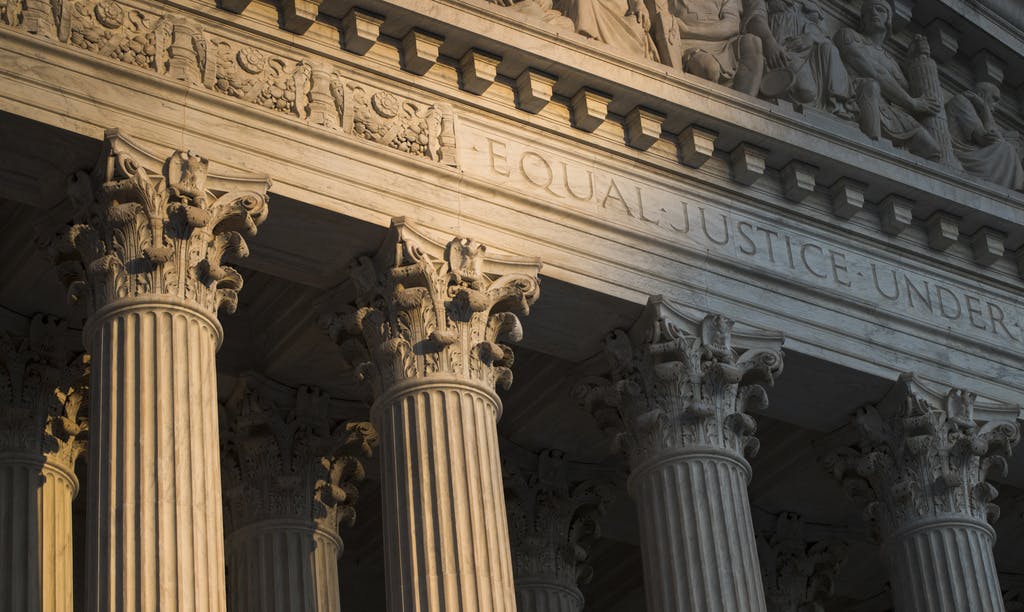Supreme Court Allows ‘Ghost Gun’ Regulation To Take Effect, Reversing Lower Court Ruling
The challenge to the rule comes as judges across the country attempt to institute new standards for interpreting firearm law and regulation in the wake of a landmark Supreme Court decision from 2022.

In a major win for the Biden administration, the justices of the Supreme Court have allowed a federal rule regulating so-called ghost guns and unserialized firearms to take effect. The ruling comes after a lower court judge declared the rule unconstitutional.
In a 5–4 administrative decision, the justices stayed the district court’s declaration that the rule was unconstitutional. Enforcement of the lower court decision was temporarily halted as President Biden’s Department of Justice appeals the ruling at the Fifth Circuit.
Chief Justice Roberts and Justice Amy Coney Barrett joined with the three liberal justices to halt the ruling. When the DOJ filed for an emergency pause on the district court ruling, the Fifth Circuit denied the motion and barred the federal rule from going into effect nationwide.
In April 2022, the Bureau of Alcohol, Tobacco, and Firearms promulgated a new rule that allows federal law enforcement to classify these ghost guns — which are firearm kits with no serial numbers that can be assembled at home — as guns themselves. This would have forced ghost gun manufacturers and sellers to comply with the federal laws that regulate the serializing, sale, and tracking of the assembled, serialized firearms.
When he announced the new rule on April 11, Mr. Biden said the measure was aimed at protecting law enforcement, children, and making sure that individuals who “can’t pass a background check” do not get access to firearms.
“These guns are weapons of choice for many criminals,” the president said from a podium in the Rose Garden. “We’re going to do everything we can to deprive them of that choice and, when we find them, put them in jail for a long, long time.”
In the last six years, the number of ghost guns that have been confiscated by federal law enforcement officials has increased exponentially. In 2017, the ATF took 1,600 ghost guns off the streets, compared to 19,000 in 2021 — an increase of more than 1,000 percent.
In a brief asking the justices of the high court to stay the district court ruling, the solicitor general, Elizabeth Prelogar, said the ATF rule would help save lives and bring ghost gun kits into compliance with federal firearms law.
“Ghost guns can be made from kits and parts that are available online to anyone with a credit card and that allow anyone with basic tools and rudimentary skills (or access to Internet video tutorials) to assemble a fully functional firearm in as little as twenty minutes,” the DOJ’s brief to the justices states. “Those features of ghost guns make them uniquely attractive to criminals.”
The case, VanDerStok v. Garland, could face a friendly audience from the riders of the Fifth Circuit once arguments are made on its merits. In one case, United States v. Rahimi, a three-judge panel of the Fifth Circuit struck down the federal prohibition on those under restraining orders from owning firearms.
One of jurists assigned to the Rahimi case, Judge James Ho, issued a concurring opinion in which he forcefully denounced domestic violence and stated his preference for stricter criminal penalties for those who commit such crimes. He went on to argue that the justice system can hold those violent abusers accountable without “offending” citizens’ Second Amendment rights.
“Those who commit or criminally threaten domestic violence have already demonstrated an utter lack of respect for the rights of others and the rule of law,” Judge Ho wrote. “So merely enacting laws that tell them to disarm is a woefully inadequate solution. Abusers must be detained, prosecuted, and incarcerated. And that’s what the criminal justice system is for.”
The contest over the ATF rule also comes as judges across the country attempt to institute new standards for interpreting firearm law and regulation in the wake of a landmark Supreme Court decision from 2022, New York Pistol and Rifle Association v. Bruen, which held that all regulations placed on Second Amendment rights must be “consistent with this Nation’s historical tradition of firearm regulation.”

